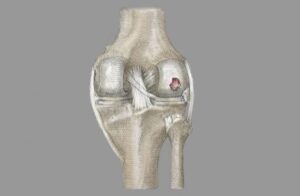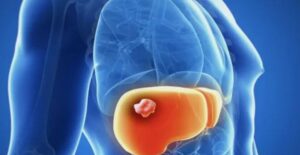CPT Code 58558 is an essential code within the realm of healthcare billing and coding, particularly in gynecology and obstetrics. This code represents a specific procedure known as “Hysteroscopy, surgical; with removal of leiomyomata.” It is crucial for medical professionals, billing specialists, and insurance companies to understand the intricacies of this code to ensure accurate billing, proper reimbursement, and effective communication within the healthcare system.
In this comprehensive guide, we will delve into the details of CPT Code 58558, exploring its definition, when it is used, the procedure it encompasses, associated diagnoses, coding guidelines, and other pertinent information.
Understanding CPT Code 58558
CPT Code 58558 refers to a surgical procedure involving hysteroscopy, which is a minimally invasive technique used to examine the inside of the uterus. This procedure allows physicians to visualize the uterine cavity and diagnose or treat various gynecological conditions. The primary purpose of CPT Code 58558 is to address leiomyomata, commonly known as uterine fibroids, through hysteroscopic removal.
Leiomyomata are benign tumors that develop in the muscular wall of the uterus. While many women with fibroids may remain asymptomatic, others experience symptoms such as heavy menstrual bleeding, pelvic pain, pressure, or reproductive issues. In cases where fibroids cause significant discomfort or affect fertility, surgical intervention may be necessary, and hysteroscopic removal offers a minimally invasive approach with fewer risks and shorter recovery times compared to traditional surgical methods.
Procedure Overview
The procedure represented by CPT Code 58558 involves several key steps:
- Patient Preparation: Before the procedure, the patient undergoes thorough evaluation, including medical history review and physical examination. Depending on the individual’s condition and medical history, additional preoperative assessments such as imaging studies may be necessary.
- Anesthesia Administration: Hysteroscopy is commonly performed under local anesthesia with or without sedation. General anesthesia may be considered for certain cases, particularly if additional surgical procedures are planned concurrently.
- Hysteroscopic Entry: The surgeon introduces a hysteroscope a thin, lighted instrument with a camera through the cervix and into the uterus. Carbon dioxide gas or a saline solution is often used to expand the uterine cavity, providing better visualization.
- Fibroid Removal: Using specialized instruments inserted through the hysteroscope, the surgeon identifies and removes the uterine fibroids. Techniques may include cutting, shaving, or vaporizing the fibroid tissue, depending on size, location, and other factors.
- Postoperative Care: After fibroid removal, the surgeon ensures hemostasis (control of bleeding) and evaluates the uterine cavity for any remaining fibroids or abnormalities. The hysteroscope is then removed, and the patient is monitored in a recovery area before discharge.
Coding Guidelines and Considerations
When using CPT Code 58558, healthcare providers must adhere to specific coding guidelines to accurately represent the performed procedure. Here are some essential considerations:
- Documentation: Accurate and detailed documentation is crucial for proper coding and billing. The medical record should include information about the indication for the procedure, findings during hysteroscopy, techniques used for fibroid removal, any complications or unexpected events, and postoperative care provided.
- Modifier Usage: Depending on the circumstances, modifiers may be appended to CPT Code 58558 to convey additional information. For example, modifier -22 (Increased Procedural Services) might be used if the procedure requires significantly more time or complexity than usual due to extenuating circumstances.
- Bundling and Unbundling: It’s essential to be aware of bundling rules and avoid unbundling related services. Certain components of the hysteroscopic fibroid removal procedure, such as anesthesia administration or concurrent diagnostic hysteroscopy, may have separate CPT codes that should not be billed separately when included in CPT Code 58558.
- Documentation of Leiomyomata: The medical record should clearly indicate the presence of leiomyomata and their significance in justifying the need for hysteroscopic removal. Diagnostic findings, such as fibroid size, location, and impact on the patient’s symptoms or fertility, should document to support medical necessity.
Associated Diagnoses and Medical Necessity
CPT Code 58558 is typically associate with diagnoses related to uterine fibroids and their associated symptoms or complications. Common diagnoses that may justify the use of this code include:
- Leiomyomata of the uterus
- Menorrhagia (excessive menstrual bleeding)
- Dysmenorrhea (painful menstruation)
- Pelvic pressure or pain attributed to fibroids
- Infertility or recurrent pregnancy loss associated with fibroids
Medical necessity for hysteroscopic fibroid removal established based on several factors, including the severity of symptoms, impact on the patient’s quality of life, response to conservative management, and desire for fertility preservation. Healthcare providers should thoroughly document the patient’s clinical presentation and failed attempts at nonsurgical interventions to support the need for surgical intervention.
Reimbursement and Insurance Considerations
Proper coding and documentation play a critical role in ensuring appropriate reimbursement for procedures billed under CPT Code 58558. Insurance companies and payers review claims for accuracy and medical necessity before processing payments to healthcare providers. Failure to meet coding and documentation requirements may result in claim denials or payment delays.
Healthcare organizations should stay abreast of payer policies and guidelines regarding hysteroscopic fibroid removal to facilitate timely reimbursement. This may include obtaining prior authorization for elective procedures. Submitting comprehensive claims with supporting documentation, and appealing denied claims when necessary.
Also Read:
Conclusion
CPT Code 58558 plays a vital role in the accurate billing and reimbursement of hysteroscopic fibroid removal procedures. Understanding the intricacies of this code, including its definition, procedural details, associated diagnoses, coding guidelines, and reimbursement considerations, is essential for healthcare providers, billing specialists, and insurance companies.
By adhering to proper coding practices, documenting procedures accurately, and demonstrating medical necessity. Healthcare organizations can optimize reimbursement while ensuring the delivery of high-quality care to patients with uterine fibroids. Continuous education and compliance with coding regulations are essential for navigating the complex landscape of healthcare billing and coding effectively.









